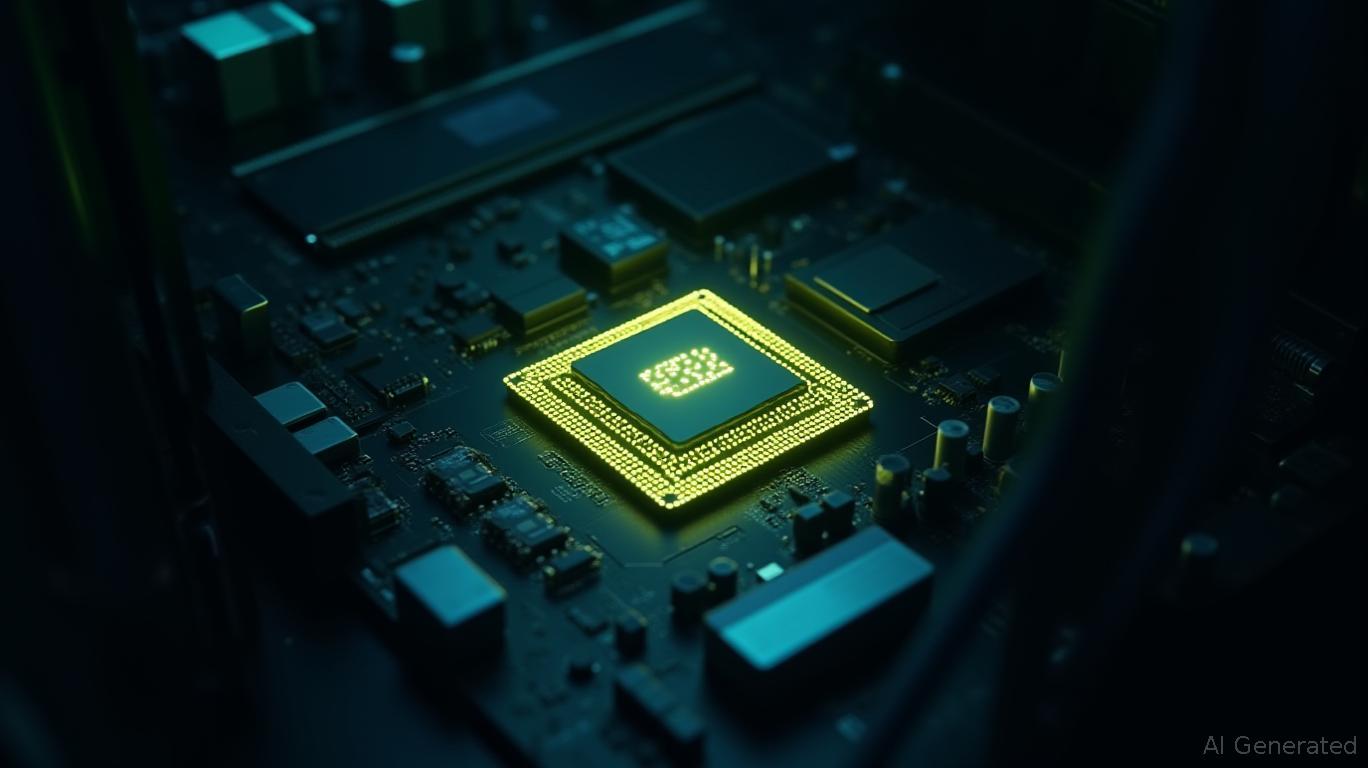NVIDIA's Global Gambit: Turning Geopolitical Headwinds into AI Dominance
The semiconductor industry's latest chapter is being written in the shadow of geopolitical turbulence. For
, the $26 billion revenue surge in Q1 FY2025—up 18% sequentially and 262% year-over-year—reveals not just a company thriving amid adversity, but a strategic juggernaut recalibrating its global footprint to dominate the AI era. As U.S.-China trade tensions escalate, NVIDIA's ability to offset regulatory headwinds through product innovation, Middle Eastern partnerships, and ecosystem lock-in positions it as the ultimate beneficiary of the AI revolution.The Data Center Surge: Blackwell's Blueprint for Global AI Infrastructure
NVIDIA's Q1 results are a masterclass in diversification. While Gaming revenue dipped 8% sequentially (to $2.6 billion), the Data Center segment exploded to $22.6 billion, fueled by the Blackwell platform's adoption. This 427% year-over-year leap underscores why NVIDIA is no longer just a GPU vendor but a full-stack AI infrastructure provider.

The Blackwell series—engineered to comply with U.S. export restrictions—has become the linchpin of NVIDIA's strategy. The Grace Blackwell B20, with its 2 trillion-parameter AI training capacity, is already powering Saudi Arabia's $5 billion HUMAIN partnership, a sovereign AI initiative targeting 18,00.0 units by 2026. Meanwhile, the H20 and L20 GPUs, designed for Chinese markets under revised export rules, have enabled sustained revenue streams in restricted regions. Analysts estimate Blackwell-derived sales could hit $13.5 billion in Q2, proving that compliance-driven innovation is not a constraint but a catalyst.
Middle East: The New Silicon Valley?
NVIDIA's pivot to the Middle East is a geopolitical masterstroke. Partnerships with Saudi Arabia and the UAE—such as the Project Stargate and HUMAIN ventures—reflect a deliberate strategy to build AI ecosystems untethered from U.S.-China volatility. These deals do more than boost revenue: they cement NVIDIA's role as the architect of sovereign AI infrastructure.
Consider the numbers: Saudi Arabia's first-phase deployment of 18,000 NVIDIA GB300 Grace Blackwell servers represents a $5 billion bet on NVIDIA's technology. These hyperscale data centers will train AI models for energy, logistics, and healthcare, aligning with Vision 2030's push for tech-driven diversification. In the UAE, NVIDIA's involvement in Stargate—a $5 billion initiative—signals a broader regional tech renaissance.
Geopolitical Risks? A Test of Resilience, Not a Showstopper
Critics cite risks: Chinese black-market smuggling of restricted GPUs, domestic chip competitors like Huawei's Ascend, and the specter of retaliatory tariffs. Yet NVIDIA's ecosystem—CUDA, Omniverse, and its AI software stack—creates a moat no rival can easily breach. Even as Chinese firms rush to replicate its hardware, NVIDIA's 78.4% Q1 gross margin (up 13.8% YoY) shows pricing power remains intact.
Moreover, the company's $50 billion share repurchase program and 10-for-1 stock split (effective June 2024) underscore confidence in its long-term trajectory.
The Investment Case: Defying the Near Term for Long-Term Dominance
While near-term headwinds—such as U.S. export rule ambiguities and Chinese competition—persist, NVIDIA's structural advantages are undeniable. Its AI-centric revenue mix (87% of Q1 sales from Data Center and Professional Visualization) and Blackwell's scalability ensure it will capture the $2 trillion AI infrastructure market.
Analysts project 29.7% revenue growth over three years, with 2025 guidance of $45 billion suggesting a “defensive growth” profile. At a forward P/E of 29x—below its five-year average—NVIDIA's valuation remains reasonable for a company with such monopolistic AI assets.
Conclusion: The AI Monopoly Is Here
NVIDIA's Q1 results are not an anomaly but a harbinger. By leveraging geopolitical friction into a global expansion play, the company has turned China's trade bans into a catalyst for innovation and market penetration. The Blackwell platform, Middle Eastern partnerships, and ecosystem dominance are not just mitigating risks—they're building a moat that will sustain growth for years.
For investors, the message is clear: NVIDIA's resilience is not accidental. It is engineered.

Comments
No comments yet